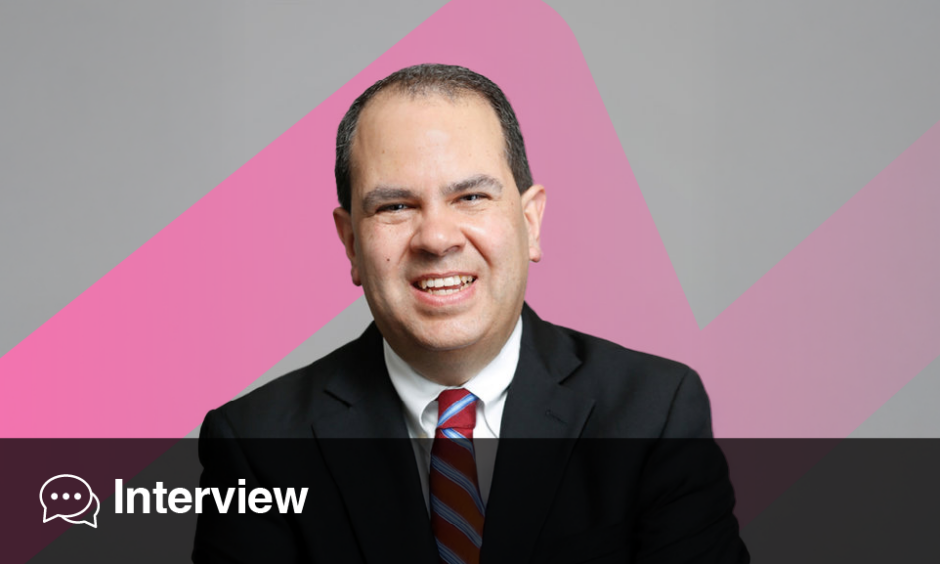Joseph Sirven | Professor of Neurology and Chairman Emeritus, Department of Neurology, Mayo Clinic, Arizona; Professor of Practice, College of Health Solutions, Arizona State University; and Chair, Education Committee, American Academy of Neurology (AAN), USA.
Citation | Neurol AMJ. 2025;2[1]:52-54. https://doi.org/10.33590/neurolamj/XRFW4394![]()
Much of your work highlights the influence of psychosocial factors on epilepsy care, particularly within Hispanic communities. Can you elaborate on how these factors contribute to delays in diagnosis and treatment? What community-driven interventions have proven most effective in bridging these care gaps?
As a Cuban American, this issue is personal for me. Psychosocial factors such as stigma, language barriers, and cultural dynamics play a significant role in delaying epilepsy diagnosis and treatment in Hispanic communities. Stigma surrounding epilepsy often leads to secrecy about seizures, preventing individuals from seeking medical care promptly. Language discordance further complicates access to care, as many Hispanic patients primarily speak Spanish, which can hinder effective communication with healthcare providers and limit understanding of treatment options. Additionally, the cultural emphasis on family-centered decision-making can sometimes conflict with traditional medical protocols, leading to delays in pursuing specialized care. These barriers contribute to significant disparities, with Hispanic individuals being less likely to access epilepsy specialists and more likely to rely on emergency departments for seizure management.
Community-driven interventions have proven effective in addressing these gaps. For example, bilingual epilepsy clinics like the Spanish Clinic for Epilepsy at Lurie Children’s Hospital of Chicago, Illinois, USA, have successfully reduced care delays by employing culturally sensitive practices and improving communication between providers and patients. Programs like Project UPLIFT, which offer telephone-based depression self-management tailored to Hispanic populations, have also demonstrated success in reducing comorbid conditions that exacerbate epilepsy outcomes. Additionally, partnerships with community organizations to distribute translated educational resources and expand telemedicine access have helped overcome logistical challenges such as transportation barriers. By combining linguistic accessibility with cultural competency, these interventions provide a roadmap for addressing systemic disparities and ensuring timely, equitable care for Hispanic patients with epilepsy.
Your 2021 American Academy of Neurology (AAN) study highlighted that disparities in epilepsy treatment are tied to race and homelessness. How has this work influenced AAN’s health policy initiatives to address systemic inequities in neurology, and what gaps remain?
Thank you for the thoughtful question. Our 2021 AAN study on disparities in epilepsy care, specifically the role of race and housing instability, joined a growing body of research that underscores how systemic inequities continue to shape access to neurologic treatment. While the findings were sobering, they were not entirely surprising to those of us working with vulnerable populations.
This study, alongside others, helped reinforce the need for policy solutions that address social determinants of health in neurology. The AAN has increasingly recognized these challenges, and its health policy initiatives now reflect a broader commitment to promoting neurologic equity. These efforts include support for Medicaid expansion, greater investment in tele-neurology to reach underserved areas, and the inclusion of health equity principles in quality improvement and reimbursement models.
Still, significant work remains. Access to epilepsy surgery and advanced treatments continues to be uneven, particularly for patients in under-resourced or safety-net settings. Minoritized groups are underrepresented in clinical research, and implicit bias and structural barriers still influence referral patterns and care delivery.
Going forward, we must prioritize policies that close these gaps by expanding access, diversifying our workforce, and embedding equity into the way we train, practice, and advocate. Studies like ours serve as reminders: the disparities are real, the data is there, and the time to act is now.
As Chair of the AAN Education Committee, how do initiatives like the Neurology Education Room or Pipeline Subcommittee address workforce gaps in epilepsy care, especially in rural areas or low- and middle-income countries?
As Chair of the AAN Education Committee, I’ve seen how intentional educational initiatives can help address workforce gaps in neurology, particularly in rural areas and low- and middle-income countries, by building both teaching capacity and a more diverse, prepared pipeline of neurologists.
The Neurology Education Room was created as a dedicated, in-person space for those passionate about medical education to come together, learn how to teach more effectively, and exchange ideas in a personalized, interactive setting. It serves as a haven for anyone seeking to deepen their skills as an educator and contribute meaningfully to the learning environment within our field.
Meanwhile, the Pipeline Subcommittee focuses on longer-term strategies by identifying and mentoring future neurologists, often reaching learners in communities historically underrepresented in medicine or located far from academic medical centers. The goal is to cultivate interest early and support individuals throughout their journey into neurology.
While these initiatives don’t solve every challenge, they are important building blocks. Expanding educational excellence and nurturing future talent are essential to ensuring that all communities, regardless of geography or income level, have access to skilled neurologic care. Education remains one of our most powerful tools in narrowing workforce disparities and strengthening the future of the field.
At the recent AAN Annual Meeting, you led a session on aviation and driving safety in neurological disorders, featuring experts from the Federal Aviation Authority (FAA) and the Department of Transportation (DOT). What were the key insights from this session?
The session on aviation and driving safety in neurological disorders at the recent AAN Annual Meeting brought together experts from the FAA, the DOT, and neurology, to examine how neurologic conditions intersect with public safety, personal mobility, and regulatory frameworks.
One of the key insights was the vital role neurologists play in navigating the balance between patient autonomy and safety, both for individuals and the public. We discussed how conditions like epilepsy, stroke, cognitive impairment, and sleep disorders can impact a person’s ability to safely operate vehicles or aircraft, and how guidance varies significantly between aviation and road travel.
Our FAA colleagues emphasized the importance of clear, thorough documentation in medical evaluations for pilots, along with the rigorous protocols they follow when reviewing neurologic cases. The DOT representatives highlighted the patchwork nature of state driving laws and the need for more standardized communication between neurologists and licensing authorities.
Another important takeaway: clinicians often feel caught between advocating for their patients and adhering to complex legal or ethical responsibilities. We explored how to counsel patients more effectively about these issues and the need for education and support for neurologists making these difficult determinations.
Ultimately, the session underscored that mobility is not just a medical issue, it’s a deeply human one. Our job as neurologists is to support both safety and dignity, working within evolving regulatory frameworks while ensuring our patients remain informed, empowered, and treated with empathy.






